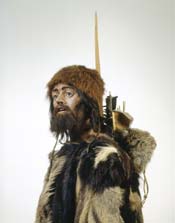LUCY. A remarkable find in 1974, Lucy is the oldest proto human (hominid) ever found, dated to 3.2 mya. The skeleton is a 40% complete australopithecine, found by Johansen near the Awash River in Ethiopia. She was named after the song "Lucy in the Sky with Diamonds," by the Beatles. She probably didn't actually have any, though, she couldn't afford it. With a 500 cc brain, however, Lucy's descendents would one day find ways to get men to shell out half a year's salary for them.
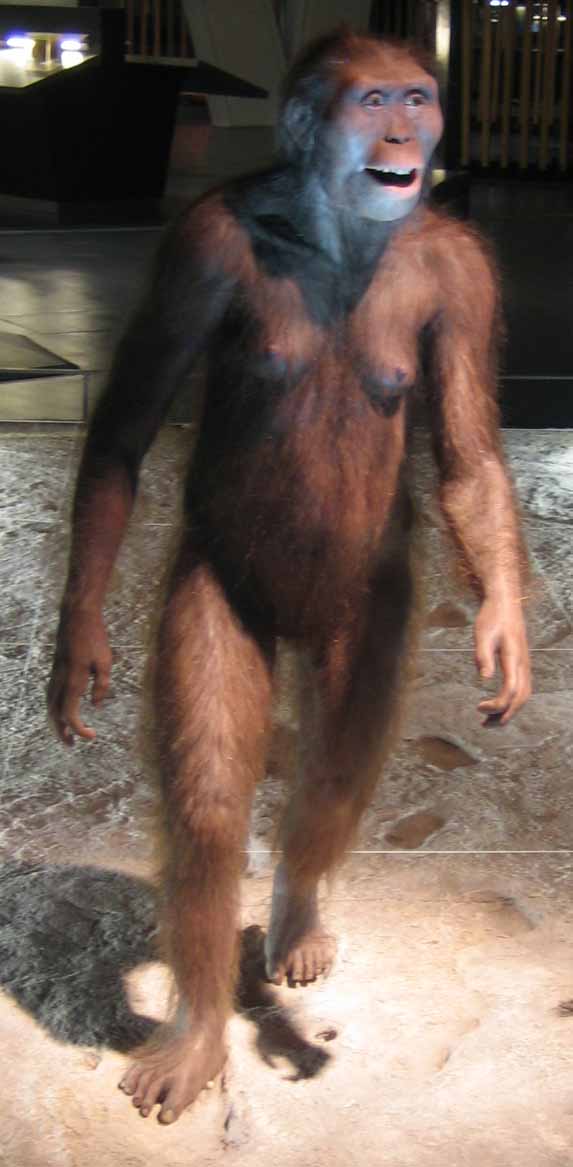
OH-62. A 1.7 mya Homo habilis found by Johansen in 1986. Located in Olduvai Gorge, Ethiopia, Mr. OH-62 had a more human face than Lucy his ancestor had, and used tools. He had an 800 cc. brain and spread from the original East African wilds to the southern part of the continent. His H. habilis compatriots discovered (tamed) fire, and their name, habilis, means 'handyman. Indeed, the specimin at right is as intent in what he is working on as a modern plumber is, scoping out for a leak.
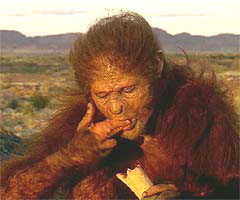
JAVA MAN & PEKING MAN. Both of these guys are famous finds from mankind's Homo erectus period, a little over 1 mya. Both were found quite a ways from East Africa, Java Man, found in 1891, lived in today's Indonesia, while Peking Man, found in 1923 lived in China. This means H. erectus had traveled far. He used hand axes and, as the picture shows, adapted well to his environment by using and eating Asian bamboo. These advances were thanks to his 1200 cc. brain, but he probably didn't know that.
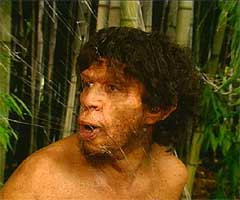
CRO-MAGNON MAN. A spectacular find in France in 1868 yielded the first true human being, named 'Cro-Magnon' after the cave he was found in. He is a true Homo sapiens- though the oldest prehistoric European ever found, he in fact differs little from modern Europeans (despite being about 40,000 years old). Only in robustness is he different (he and his people had more than we pip-squeaks). He ate like we do (carrots, meat, grain, beet, onion, turnips... all of which grew in the wild). His womenfolk made clothes, while he made homes out of caves, bone, fur, hide, tree branches etc., in essence, he was what we call today a Paleolithic 'caveman.' His outstanding cave paintings in France and Spain are the first evidence of abstract art and imagination in history. They were usually of animals, with the thinking that life would imitate art, or that their representation would somehow influence their hunt.
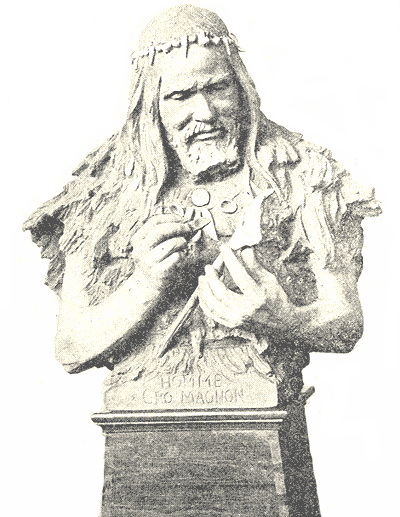
OTZI, THE ICE MAN. Hikers in the Alps found Otzi in 1991, and he had all of his accoutrements with him, freeze-dried. He yielded a great picture of what prehistoric life was like 5,300 years ago, during the Neolithic period. He was a shepherd flocking sheep across the Alps when he died, murdered (there was an arrowhead in his back), and he had insulated boots made from leather and stuffed with grasses, a bow, dried meat in his backpack, trail mix made of seeds, and an ax. Otzi's compatriots had domesticated dogs and goats, too. So our taxonomy goes like this: KINGDOM: Animal. PHYLUM: Chordata (backbone). CLASS: Mammal. ORDER: Primate. FAMILY: Hominid. GENUS: Homo. SPECIES: Sapiens. Welcome to the new world.
